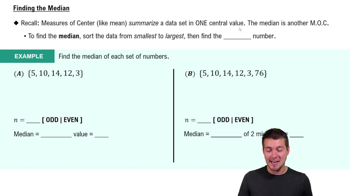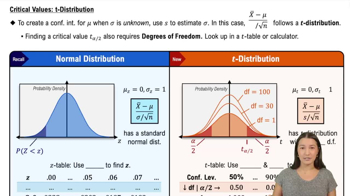Here are the essential concepts you must grasp in order to answer the question correctly.
Paired Data
Paired data refers to two sets of related observations, often collected from the same subjects under different conditions. In this context, it involves measuring wait times for the same ride at different times or conditions, allowing for a direct comparison of differences. This method helps control for variability between subjects, making it easier to detect effects or differences.
Recommended video:
Visualizing Qualitative vs. Quantitative Data
Median of Differences
The median of differences is a measure of central tendency that indicates the middle value of a set of differences when arranged in order. In the context of paired data, if the median of the differences is 0, it suggests that there is no systematic difference between the paired observations. This is crucial for hypothesis testing, as it helps determine if the observed differences are statistically significant.
Recommended video:
Expected Value of T
The expected value of T in the context of rank sums or paired data refers to the average value of the test statistic under the null hypothesis. If the population of differences has a median of 0, the expected value of T would reflect this condition, indicating that, on average, the ranks of the differences would balance out around zero. This concept is essential for understanding the distribution of the test statistic and for making inferences about the population.
Recommended video:
Critical Values: t-Distribution






